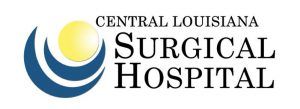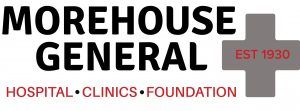
Nasal Disorders and Balloon Sinuplasty
Common Nasal and Sinus Problems and Allergies
Sinusitis (rhino sinusitis) affects between 10% and 30% of people in the U.S. each year. It happens when the nose and/or sinuses are unable to drain because of blockages. Development of Sinusitis is common in the wake of a cold, upper respiratory infection, or allergic reaction. Environmental irritants, certain medical conditions, and structural abnormalities, such as nasal polyps, a deviated septum, or nasal tumors, can contribute to sinusitis.
Sinusitis creates a sense of pressure and discomfort in the head and face. Common secondary symptoms include: nasal congestion, nasal discharge, coughing, fever, and a sore throat. Dr. Webb offers a variety of treatments for nasal and sinus problems. Medications, lifestyle modifications, or surgery to correct structural disorders may be recommended. We can direct and manage a customized treatment plan for each person.
Recurrent and chronic sinus infections (chronic sinusitis)
Chronic sinusitis refers to infection, inflammation, or swelling of the sinuses and nasal cavity. The sinuses are a group of hollow spaces that surround the nose and eyes. Sinus infections include cloudy or colored discharge from the nose with nasal blockage or facial pain/pressure. Other symptoms include fever, cough, fatigue, lack of or reduced sense of smell, dental pain, and ear fullness. The symptoms can be serious enough to disturb your quality of life or general well-being.
Patient Documents
Nasal Allergies
Nasal allergies can be defined as swelling of the inside lining of the nose that occurs when a person inhales something he/she is allergic to, also known as “hay fever.” This is common in both children and adults.
The symptoms can range from mild to severe. Symptoms include runny nose, stuffiness, sneezing, itchy nose, and red, watery eyes. Patients can have allergies at different times of year or when exposed to different allergens.
Nasal Polyps
Most people with nasal polyps have runny nose, sneezing, and postnasal drip; about 75% have a decreased sense of smell. Many people also develop asthmatic symptoms such as wheezing, sinus infections, and sensitivity to fumes, odors, dusts, and chemicals. Removal of Nasal Polyps can many times be done easily at Dr. Webb’s office.
Nosebleeds
The nose is an area of the body that contains many tiny blood vessels (or arterioles) that can break easily. In the United States, one of every seven people will develop a nosebleed some time in their lifetime. Nosebleeds can occur at any age but are most common in children aged 2-10 years and adults aged 50-80 years.
If frequent nosebleeds are a problem, it is important to consult an otolaryngologist. An ear, nose, and throat specialist will carefully examine the nose using an endoscope, a tube with a light for seeing inside the nose, prior to making a treatment recommendation. Two of the most common treatments are cautery and packing the nose. Cautery is a technique in which the blood vessel is burned with an electric current, silver nitrate.
Endoscopic Nasal Surgery
Sinus surgery has truly evolved over the years. Sinus surgery was once performed through external incisions, caused significant pain and discomfort, and was often followed by a long recovery period.
Recent advances in technology, including the nasal endoscope, sinus surgery is now commonly performed entirely through the nose, without face or mouth incisions. The nasal endoscope is a small, lighted metal telescope placed into the nostril. The endoscope allows the surgeon to see inside the nose and sinuses, usually with a special video camera attached to the endoscope. Today, endoscopic sinus surgery is typically done without nasal packing. Usually there is mild pain and short recovery times.
Septoplasy
A “Septoplasty” is a surgery used to straighten the crooked cartilage and bone on the inside of the nose. This surgery helps correct the inside of the nose but does not change the appearance of the outside of the nose.
Balloon Sinuplasty
Sinus Sufferers Find Relief That Lasts
Office sinus dilation, also referred to as Balloon Sinuplasty, is a minimally invasive option that can be performed by Dr. Webb right here, in Central Louisiana. The goal of office sinus dilation is to reshape anatomy to expand sinus pathways and restore drainage. Here’s how it works:
The procedure utilizes small balloons placed in key places in the nose and sinus, which are then dilated to expand the sinus pathways. It may be an effective, lasting option for some patients whose symptoms do not resolve with medication.
The benefits of Balloon Sinuplasty include:
- Delivers instant, lasting relief
- Convenient, comfortable office procedure
- Quick recovery—most patients return to normal activity in 24 hours
- May reduce healthcare costs
Schedule an appointment to discuss Balloon Sinuplasty with Dr. Webb today!
Dr. Webb is a trained and experienced user of office sinus dilation technologies. To determine if balloon sinus dilation is right for you, schedule an appointment with the Red River ENT Associates in Alexandria by calling (318) 427-3311.
Who Can Benefit from Balloon Sinuplasty?
What to Expect During the Procedure
What to Expect After the Procedure
Balloon Sinuplasty, procedure from beginning to end
Dr. Webb is proud to be on staff at these facilities





